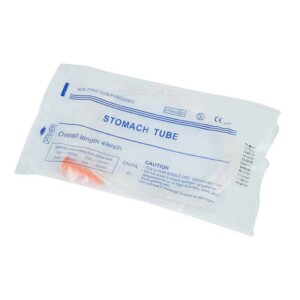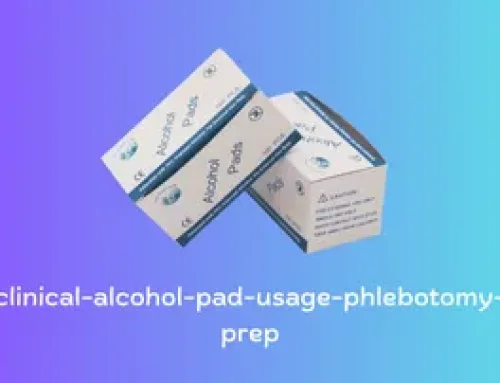A stomach tube is a medical tool used to provide nourishment, medicine, or to carry out other healing treatments. The device is put in through the nose or mouth and goes down into the stomach or small intestine. The following article will look at the different types of stomach tubes, their benefits and risks, how to properly care for them, and any potential complications.
Stomach tubes have many medical uses, including the treatment of patients who cannot eat or swallow food due to various conditions, such as cancer, stroke, or surgery. They can also be used to decompress the stomach or remove its contents, especially in cases of gastrointestinal obstruction or ileus.
Types of Stomach Tubes
There are several types of stomach tubes available. The type of tube selected depends on the intended purpose of the procedure, patient’s medical history, and condition. Here are some of the most common types of stomach tubes:
Orogastric Tube: This tube is inserted through the mouth and passed down the throat into the stomach. It is commonly used for short-term feeding in emergency situations.
Nasogastric Tube: This tube is inserted through the nose and passed down the throat into the stomach. It is used for both short-term and long-term feeding.
Gastrostomy Tube: This tube is surgically placed directly into the stomach through a small incision in the abdomen. It is commonly used for long-term feeding in patients who cannot tolerate oral intake.
Jejunostomy Tube: This tube is surgically placed directly into the small intestine. It is used in patients who have difficulty absorbing nutrients from the stomach.

Stomach Tube
Benefits of Stomach Tube
Feeding: One of the primary benefits of a stomach tube is to provide nutrition to patients who cannot eat or drink normally. Stomach tubes are used to deliver liquid or pureed food directly into the stomach, bypassing the mouth and throat. This is helpful in patients who are unable to swallow due to medical conditions such as stroke, Parkinson’s disease, or head and neck cancers.
Medication Administration: Stomach tubes can be used to administer medications that cannot be given orally. This is helpful in patients who cannot swallow pills or liquid medications.
Decompression: Stomach tubes are also used to relieve the stomach of excess gas or fluid. This is done by suctioning out the contents of the stomach, which can alleviate symptoms such as nausea, vomiting, and abdominal pain.
Gastric Lavage: Stomach tubes can be used to perform gastric lavage, a procedure that involves flushing the stomach with water or saline to remove toxins or foreign objects.
However, there are some risks and potential complications associated with the use of stomach tubes. These include infections, perforations, and damage to the throat or esophagus during insertion. Patients who require long-term use of stomach tubes may also experience discomfort or irritation from the device, as well as social stigma or difficulty with daily activities.
Risks and Complications
As with any medical procedure, stomach tubes carry some risks and potential complications. These include:
Infection: The insertion of a stomach tube can introduce bacteria into the body, leading to infection.
Bleeding: The insertion or removal of a stomach tube can cause bleeding in some cases.
Perforation: There is a risk of perforating the stomach or intestine during the insertion of a stomach tube, which can lead to serious complications.
Aspiration: Aspiration occurs when stomach contents are inadvertently breathed into the lungs, leading to respiratory distress or pneumonia.
Care and Maintenance of Stomach Tubes
Proper care and maintenance of stomach tubes are essential to prevent complications and ensure their optimal function. Here are some of the essential care and maintenance steps:
Cleaning and Flushing: Stomach tubes should be cleaned and flushed regularly to prevent infection and blockage. This is done by using sterile water or saline to flush the tube after feeding or medication administration.
Tube Placement Verification: It is essential to verify the correct placement of the stomach tube before use. This is done by aspirating stomach contents or performing an x-ray.
Proper Positioning: Patients with stomach tubes should be positioned correctly to prevent dislodgement or blockage. The head of the bed should be elevated, and the patient should be positioned on their side during feeding or medication administration.
Monitoring: Patients with stomach tubes should be monitored closely for signs of complications such as infection, bleeding, or dislodgement.
Conclusion
Stomach tubes are a crucial medical device used for feeding, medication administration, and other therapeutic procedures. The type of tube selected depends on the intended purpose and patient’s medical condition. While stomach tubes offer several benefits, they also carry risks and potential complications. Proper care and maintenance of stomach tubes are essential to prevent complications and ensure their optimal function. Overall, stomach tubes are an important medical tool that can provide essential nutrition, prevent aspiration, and aid in diagnosing and treating certain medical conditions, but they must be used carefully and with consideration of the potential risks.
FAQs
Is a stomach tube only used for feeding? No, stomach tubes are also used for medication administration, decompression, and gastric lavage.
Can anyone insert a stomach tube? No, stomach tubes should only be inserted by trained medical professionals.
How often does a stomach tube need to be cleaned? Stomach tubes should be cleaned and flushed after each feeding or medication administration.
How do you know if a stomach tube is properly placed? The correct placement of a stomach tube can be verified by aspirating stomach contents or performing an x-ray.
Can a person still eat and drink with a stomach tube? In most cases, a person with a stomach tube cannot eat or drink normally. They receive their nutrition through the tube directly into their stomach or small intestine.




